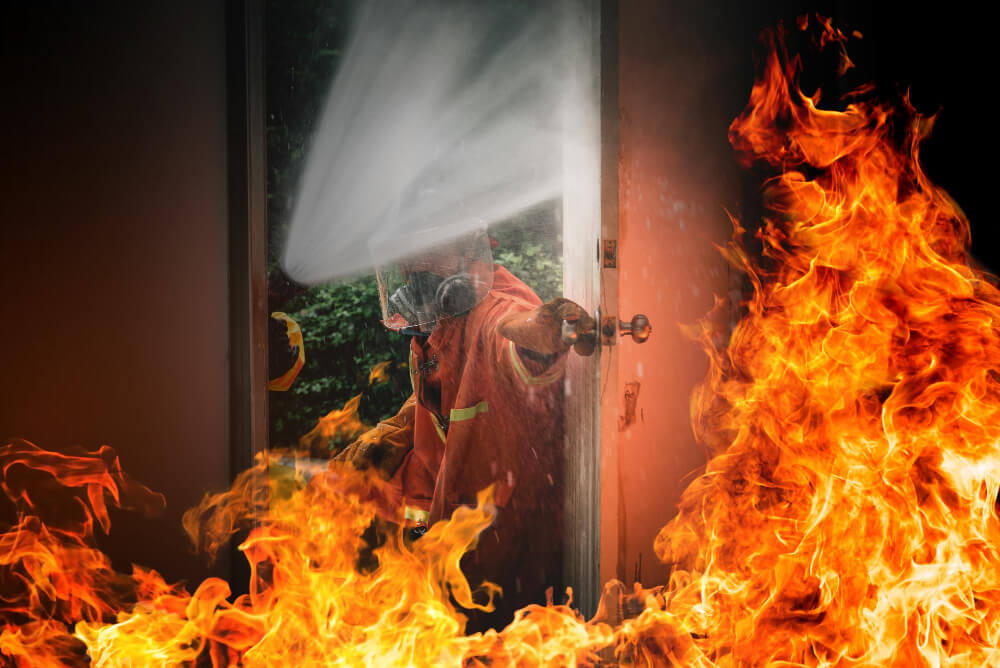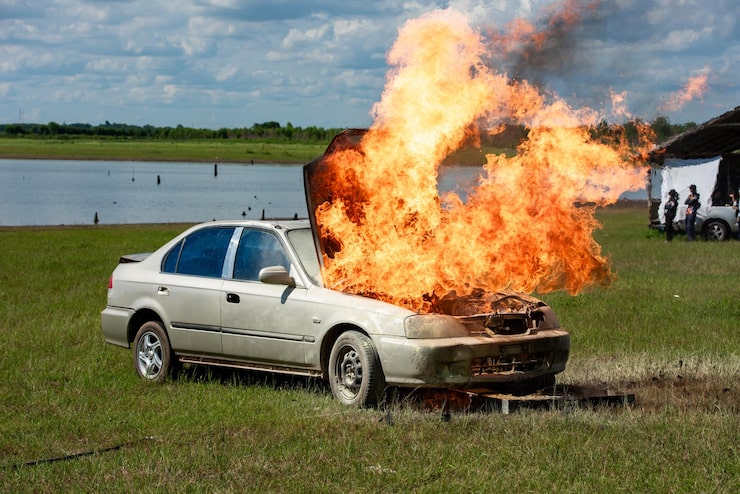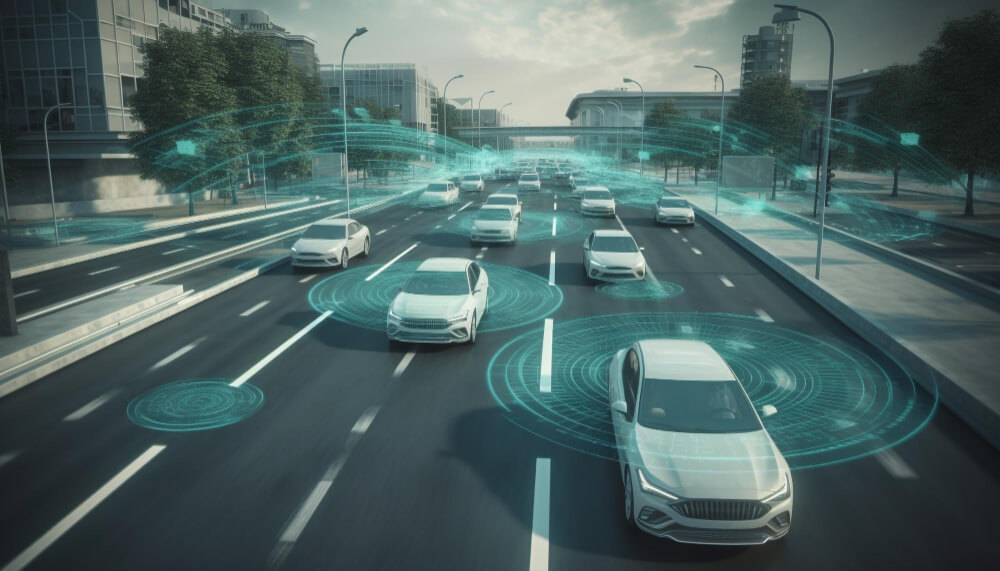
Driving Future Through Advanced Fire Suppression
For the competition of safer mobility, fire suppression technology has become a distinguishing feature of contemporary design. From engine blocks to high-voltage battery structures, vehicles need to infuse refined guard mechanisms. According to research, when fire suppression technology is integrated with forecasting technology and real-time sensing, occurrences of fires come down drastically (ScienceDirect, 2025; IEEE Safety Reports, 2024). Products such as Auto Burn Stop demonstrate the science in action, utilizing sensors, fire tanks, and software to realize measurable outcomes. To manufacturers, the inclusion of fire suppression technology increases compliance rates and consumer confidence. To fleets, it is part of a greater automotive safety innovation campaign, where systems improve with each reported incident. This piece addresses the way Auto Burn Stop, firefighting technology, and motor vehicle safety technology come together as one blue print that maps the road safety of tomorrow.
Scientific Evolution of Fire Suppression
Today’s fire protection technology relies largely on chemistry and materials science. Water-mist systems, aerosol agents, and encapsulated retardants were all evolved through several decades of lab experimentation (Fire Technology, 2025). Auto Burn Stop uses these innovations by placing tanks and valves in positions where there is full coverage. Microprocessors within them ensure that suppression technology for fire comes out only after classifiers have validated real ignition events. This accuracy enhances car safety technology as cars are no longer dependent on human reaction. Furthermore, in-field validation verifies fire suppression technology not only but also reduces re-ignition danger. To fleets, Auto Burn Stop introduces suppression science into business-as-usual, bridging theory and practice. Every deployment verifies fire suppression technology, restoring confidence while demonstrating automotive safety technology is not wishful but working. Together, these characteristics establish new benchmarks in proactive vehicle security.
Integration with Advanced Vehicle Systems
Automobiles of today need to incorporate fire suppression technology seamlessly with electrical, thermal, and digital systems. Lithium-ion batteries need special kinds of suppression, and combustion engines need pipelining. Auto Burn Stop fills these gaps by integrating detection algorithms with suppression agents. By doing so, fire suppression technology is incorporated into system design, not as an add-on. By doing this, manufacturers make automotive safety innovation the competitive benchmark. Statistics indicate that combined suppression decreases downtime, decreases repair expenses, and increases consumer confidence (NFPA, 2025). In fleets, the combination of fire suppression technology with telematics facilitates predictive maintenance, keeping systems running. In the long run, Auto Burn Stop creates a feedback loop where data accumulated fortifies the science of fire suppression technology. This creates a faster road to world car safety innovation, substantiating integration as a necessity and a possibility.
Predictive Analytics and Connected Safety
The future of firefighting technology is anticipation, not response. Thousands of thermal and chemical events are taught algorithms to identify normal oscillations as opposed to genuine fire threat. Auto Burn Stop illustrates this through the merging of classification logic with GSM/GPRS connectivity. It ensures that firefighting technology is triggered within milliseconds while at the same time alerting relief centers. This connectivity turns isolated incidents into system-wide understanding, fueling automotive safety innovation. Fleets are supplied with dashboards monitoring incidents, contrasting trends, and streamlining future operations. Every noted activation by Auto Burn Stop continues to make fire suppression technology more reliable, and predictive modeling speeds up response. What remains is an ongoing process of refining, whereby automotive safety technology becomes refined further with every dataset. Suppression, in this case, is not an isolated encounter but an increasingly refining science-driven environment with interdependent infrastructure.
Regulatory Standards and Compliance Frameworks
Adoption of fire suppression technology relies on adherence to company standards. CSA, UL, and Transport Canada require tested documentation and reproducible results. Auto Burn Stop meets these requirements with tested performance documentation and system certification. Regulators increasingly look for fire suppression technology to be embedded within more general automotive safety innovation strategies. This brings cars up to technical as well as policy levels. Academic studies (ScienceDirect, 2025) prove that leaders in compliant fire suppression technology are certified sooner and with more market confidence. Fleets equipped with Auto Burn Stop gain directly, evident from simplified insurance claims and operational audits. Through the unification of tested fire suppression technology and scalable auto safety innovation, manufacturers and operators enhance industry expectations. This convergence asserts compliance, when addressed scientifically, is not only duty but advantage.
Building A Connected Safety Ecosystem
In networked mobility, fire suppression technology is not encapsulated but integrated in a digital ecosystem as a whole. Auto Burn Stop is the case in point by providing real-time data to relief centers, insurers, and fleet dashboards. Every event recorded enriches databases and drives motor vehicle safety innovation. The effect is cascading: a single fire prevented in a single vehicle informs strategy across thousands. By deploying fire suppression technology into networked systems, fleets receive predictive notifications, manufacturers receive consumer confidence, and regulators receive control. By the end, Auto Burn Stop integrates the network, making fire suppression technology the cause of safety and operating intelligence. This convergence is the future of automotive safety innovation, with every vehicle a part of a unified system committed to prevention, protection, and continuous innovation. The result is obvious: safer mobility for everyone.
Conclusion
This is not just a safety feature, it is innovation. Advanced cars with advanced fire suppression technology no longer react to emergencies; they pre-react and disarmed them. Auto Burn Stop applies scientific precision to utilitarian purpose, demonstrating that preventive defense can be reliable and replicable. To manufacturers, the inclusion of fire suppression technology lends credibility to products. For fleets, integration of the system into larger automotive safety innovation efforts minimizes downtime and risk. For regulators, field-proven solutions such as Auto Burn Stop set a higher standard throughout the industry. The science is indisputable: good fire suppression technology integrated with dynamic automotive safety innovation keeps vehicles one step ahead of disaster. These factors together lay the groundwork for the future of mobility where safety is no longer a response but a built-in intelligence system.



